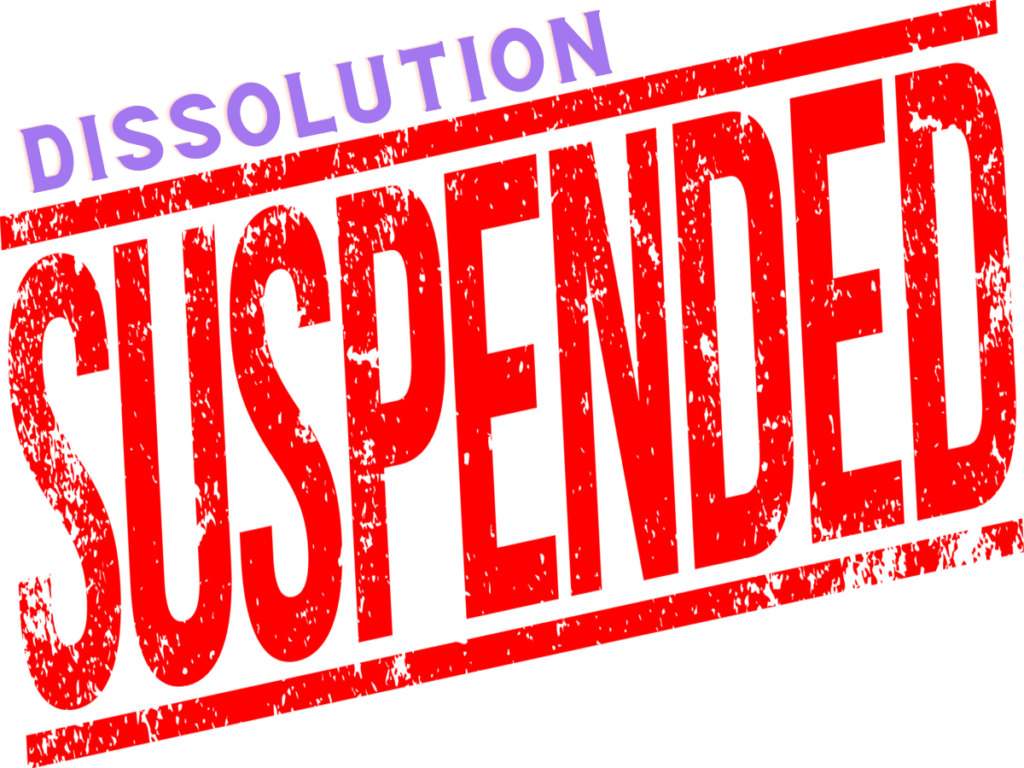In-depth Insights into Compulsory Strike Off Treatments
In-depth Insights into Compulsory Strike Off Treatments
Blog Article
A Comprehensive Overview to the Compulsory Strike Off Procedure in Corporate Administration
Navigating the elaborate landscape of business administration calls for a keen understanding of the treatments that regulate the dissolution of entities. The obligatory strike off procedure, an important aspect in corporate administration, offers as a mechanism to apply compliance and maintain the integrity of the company environment. As organizations evolve and situations change, the demand to strike off a company may arise for different factors (first gazette notice for compulsory strike-off). Discovering the details of this procedure, consisting of the legal implications, procedural steps, and post-strike off factors to consider, uses vital insights for stakeholders seeking to browse the complexities of corporate governance.
Factors for Compulsory Strike Off
There are numerous essential factors that might trigger the initiation of a mandatory strike off treatment for a firm. Non-compliance with regulative demands can raise worries about the company's operations and economic wellness, leading to the choice to strike off the business from the register.
Additionally, firms that have ceased trading or are no more executing any type of company activities might additionally deal with obligatory strike off. This might be because of bankruptcy, mergers, or merely a choice to wind up the business. In such cases, maintaining the company on the register would certainly offer no objective and might potentially produce confusion amongst stakeholders.
Eventually, the necessity of a required strike off in corporate governance develops when a company is no more operating according to the regulation or has actually come to be defunct, necessitating its removal from the authorities documents.
Legal Ramifications and Dangers
Given the circumstances that trigger a required strike off in corporate governance, it is important to comprehend the lawful ramifications and threats associated with such actions. When a company is struck off the official register, it stops to exist as a legal entity. This can have severe consequences for financial institutions, directors, and shareholders. Supervisors might face individual liability for company financial debts sustained after the dissolution, revealing their assets to potential seizure. Shareholders lose their financial investment in the company, and financial institutions might locate it challenging to recuperate debts owed to them.
Furthermore, there are legal effects for individuals entailed in the management of a business that has been by force struck off. In addition, the reputational damage from a required strike off can have enduring results on individuals and their ability to engage in future organization endeavors.
Actions in the Strike Off Process
Initiating the required strike off process in corporate governance includes a collection of prescribed actions detailed by regulative authorities. The very first step commonly needs the firm to send a formal application or notice to the relevant federal government agency or registrar signaling its intent to be struck off the main register. Subsequently, the firm is commonly required to settle any kind of outstanding liabilities, financial obligations, or taxes to make sure compliance with regulative needs.
As soon as the first documents is sent and economic obligations are satisfied, the governing body will certainly publish a notice in the main gazette or a similar publication to notify stakeholders concerning the impending strike off. This notice functions as a last chance for any type of interested events to raise arguments or existing valid reasons that the company ought to not be dissolved.
Following the magazine of the notification, the regulatory authority will certainly continue with the strike off procedure if no substantial objections or barriers develop. The business will after that be formally liquified, and its name will be gotten rid of from the register, successfully marking the final thought of the compulsory strike off procedure in business governance.
Files Needed for Strike Off
In conformity with regulatory standards, particular documents must be given to facilitate the strike off procedure in company administration. The called for files commonly include a formal application for strike off, which requires to be completed precisely and sent to the relevant governing authority. Additionally, monetary declarations, such as the company's most recent annual report, have to be consisted of to ensure that all monetary obligations have actually been resolved prior to initiating the strike off procedure. Additionally, a declaration of solvency or a declaration validating that the business has no impressive responsibilities is commonly mandated to show that the entity can be dissolved without creating damage to its lenders. Moreover, any type of necessary authorizations from investors or board members ought to be documented and confined with the application. It is vital to guarantee that all the requisite documents is meticulously ready and submitted in accordance with the prescribed guidelines to speed up the strike off process effectively. Failure to supply the essential paperwork may lead to hold-ups or problems in the dissolution of the firm.
Post-Strike Off Considerations and obligations

One more crucial post-strike off factor to consider is the possibility for the firm to be brought back to the register. If there is a need to restore the business after strike off, the process for restoration have to be very carefully complied with to make certain conformity with lawful demands.
Verdict

There are a number of crucial reasons that might trigger the initiation of a mandatory strike off procedure for a company. Non-compliance with regulatory requirements can raise concerns about the company's procedures and economic health, leading to the decision to strike off the company from the register.
In addition, firms that have actually stopped trading or are no much longer bring out any type of service tasks might likewise encounter compulsory strike off. If there is a need to revive the company after strike off, the process for repair need to be carefully complied with to ensure conformity with lawful requirements.In conclusion, the compulsory strike off procedure in business governance serves as an essential device to get rid of inoperative business from the register.
Report this page